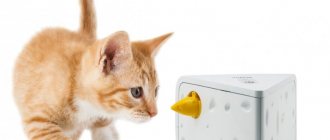Causes of ascites Clinical signs Diagnosis Treatment Home care Ascites
is a pathological accumulation of fluid in the abdominal cavity. The amount of fluid may be subtle or significant, which determines the degree of bloating. Ascites can occur for many reasons, most of them very serious. Ascites are a consequence of the penetration of fluid from blood and lymphatic vessels and internal organs into the abdominal cavity.
Ascites often begins slowly and in small quantities, but if ascites forms quickly or a lot of fluid accumulates, it can become an emergency. Large volumes of free fluid in the abdominal cavity can put pressure on the diaphragm, leading to respiratory problems and respiratory failure. Fortunately, this phenomenon is rare.
Why is ascites dangerous?
In addition to physical discomfort, the accumulation of fluid in the abdominal cavity has several negative consequences:
- Limitation of the mobility of the diaphragm leads to the appearance of reflex contractions of the muscles of the esophagus. Externally, this symptom manifests itself as vomiting or a condition resembling hiccups.
- Impaired blood flow through the hepatic veins leads to increased blood pressure in the walls of the esophagus and lower intestines. At the stage when the pet’s body cannot cope with the disease, bleeding may be observed (blood in the vomit or in the stool).
- Compressing the abdominal lymph nodes with a large volume of fluid leads to even greater congestion and can cause severe pain in the cat.
With constantly increased pressure in the abdominal cavity, the nutrition of the intestinal walls is disrupted, which is manifested by enteritis, constant diarrhea, and progressive weight loss of the pet.
The answer to the owner’s question about how long cats with ascites live depends on the quality of diagnosis and treatment of the pet.
Prevention measures
Prevention of this pathology consists of regular examinations by a veterinarian and early detection of heart, kidney and liver diseases.
.
Timely treatment of these diseases will prevent the development of complications such as ascites. For a cat, as for a person, the correct diet
, which contains all the nutrients, vitamins and microelements in the right quantities, remains important in preventing diseases.
If your beloved cat suddenly “puts on weight”
, has become lethargic and inactive, do not attribute everything to age, have your pet checked by a veterinarian. It also makes no sense to treat a cat only with folk remedies and try to alleviate the symptoms of the disease on your own, since the treatment of a cat must be comprehensive, including therapy for the underlying disease. In severe cases, ascites quickly develops and leads to the death of the animal, but such an outcome can and should be avoided by turning to the veterinarians of “YA-VET” for help.
Experienced professionals
Our veterinarians, who spend a lot of time fighting the pathologies of their patients, will come to your aid. Emergency on-site care for animals becomes a convenient and fast way, since it is not always possible to deliver your pet to the clinic yourself. The doctor will come to you at the agreed time, examine you and give recommendations. When there is a need for hospitalization and constant medical supervision, the animal is transferred to a hospital. In general, at home under the supervision of a doctor, you can achieve good results in the treatment of various diseases, including ascites. At home, as they say, even the walls help; a sick animal does not need additional stress in a hospital environment and the risk of contracting dangerous infections.
By calling our phone number, you can ask your veterinarian questions and find out about prices for services and medications in a free consultation with a specialist. The doctor will not limit himself to one visit, he will accompany your pet until complete recovery, always staying in touch with you. Remember that your pet depends on you and relies on your care!
Reasons for the development of ascites
A variety of diseases of the cardiovascular system, blood system, liver and kidney pathologies can lead to disruption of the outflow of fluid from the vessels of the abdominal cavity.
The main reasons for the development of ascites include:
- Decrease in protein content in blood plasma, namely the albumin fraction. This pathological condition can be caused by a lack of protein food in a cat, enteritis, severe allergies to certain foods, helminthic infestation, and large loss of protein through the kidneys. In addition, the disease develops when the liver function is impaired, where the bulk of protein is synthesized in the body. Due to a decrease in plasma oncotic pressure, fluid leaves the bloodstream and is retained in the surrounding tissues.
- A similar mechanism for the development of the pathological syndrome is observed during the growth and decay of oncological tumors. The tumor always absorbs a large amount of protein, which cannot be replenished with food. With malignant neoplasms, a second mechanism may also occur, in which the tumor compresses the lymphatic or blood vessels in the abdominal cavity.
- A serious pathology in which fluid remains within two layers of the peritoneum is heart failure. A decrease in the contractility of the right ventricle is invariably accompanied by fluid retention in the abdominal cavity.
- With viral peritonitis, the permeability of the peritoneal layer, as well as blood vessels, sharply increases. With this pathology, fluid enters the abdominal cavity through dilated channels.
- Abdominal injuries may also be accompanied by ascites.
A mechanical obstruction to the outflow of plasma fluid and lymph with the development of ascites creates cirrhosis of the liver. Cirrhosis is the final stage of chronic hepatitis and can be observed in acute toxic poisoning with poisons or pesticides. Adhesions and scars in the liver tissue do not allow blood to fully pass through the portal vein.
How to help your pet
Strict adherence to all the veterinarian’s recommendations will eliminate all questions on the topic “Is it possible to cure cat ascites?”
Only methodical adherence to the chosen course of treatment will help save the animal from death. First of all, the cat needs a special diet. The food must be natural and not contain any smoked meats or dry food. Steamed meat and fish can only be lightly seasoned. It is also worth following a water diet. The less liquid your cat drinks, the easier it will be for her body to fight the disease.
Herbal decoctions that have a diuretic effect can completely replace water and help get rid of excess fluid in the body.
Under no circumstances should you use traditional methods of treatment, as they can only remove the symptoms, but the cause of the disease will remain. Such self-medication will not help the animal in any way, but will only speed up its death.
If the disease is not advanced, then comprehensive treatment can save the cat and prolong its life. The care and attentiveness of the owner, as well as the right medications, will help put the animal back on its feet.
But even after complete recovery, the dietary regimen must be followed.
Symptoms of ascites in cats
The increase in abdominal dropsy is not an acute process. It will take a fairly long period for full-fledged edema to develop.
Symptoms of ascites in cats include the following:
- Increase in abdominal volume. A diagnostic test can be done to detect ascites. To do this, the pet is placed on its hind legs, supporting it under its paws. Then the cat is lowered onto all 4 limbs, and the shape of the abdomen is visually assessed. If there is excess fluid in the cavity, the abdomen takes on the shape of a pear.
- With an increase in plasma transudate in the tissues, signs of painful attacks appear.
- The cat refuses its usual food and its appetite disappears.
- There is a pronounced decrease in usual daily activity, the pet prefers to lie down or sit.
- A kind of snoring during sleep, and sometimes while awake, is a sign of compression of the diaphragm and a number of nerve bundles.
- Against the backdrop of an enlarging belly, the animal itself loses weight and looks emaciated (cachexia).
Shortness of breath is caused not so much by compression of the diaphragm as by a limitation of its mobility (after all, the abdominal cavity is occupied by accumulated fluid).
Diagnosis of the disease
The first and most striking symptom is an enlarged abdomen, as well as a positive test, which are very indicative of diagnosing the disease. But in any case, it is important to find out the cause of the development of this pathological condition.
For diagnostic purposes, a comprehensive examination of the pet is carried out:
- A complete blood count will reveal anemia and any signs of inflammation.
- The leading role is given to a biochemical blood test, which evaluates the content of total protein and the ratio of its fractions. With liver pathology, liver enzymes in the blood sharply increase - signs of cell breakdown in the organ. Elevated urea levels indicate impaired kidney function.
- A general urine test can often confirm renal pathology.
Great attention is paid to instrumental diagnostics. An ultrasound of the abdominal organs will reveal tumors and adhesions that interfere with normal blood flow.
An ultrasound assessment of the liver is also performed to determine the presence of cirrhosis and scarring. Modern ultrasound machines make it possible to further assess the state of blood flow in the abdominal cavity.
An X-ray examination is performed to calculate the approximate amount of fluid in the cavity and estimate the size of the internal organs (lungs, liver, heart).
An enlarged malignant tumor can sometimes be seen on an x-ray. Identifying the exact cause of the pathology allows you to determine how to treat ascites in a cat in this case.
What it is?
If we translate this term literally, we get something like “watery brain.” Normal translation: dropsy of the brain
The swelling of this vital organ is accompanied by an increase in the size of the skull, various seizures, and other unpleasant phenomena. Most often, hydrocephalus is a congenital pathology.
In this disease, cerebrospinal fluid (CSF) accumulates in the skull and brain. The congenital form is called primary hydrocephalus. Secondary disease affects adult animals, and is often associated with tumors, injury or inflammation, which disrupts the normal outflow of fluid. This is extremely rare. As a rule, with such serious lesions of the central nervous system, the cat simply does not survive even to the early manifestations of hydrocephalus, so there is little point in discussing this form.
The congenital form of the pathology can be caused by many factors, including poor heredity, intrauterine infection, a reaction to medications, and injuries sustained by the kitten during a difficult birth. In the latter case, some injuries or deformations of the skull may be noticeable after birth. Note that this pathology is relatively rare in cats, but all Siamese are considered predisposed.
Treatment tactics for ascites
Due to the large number of different causes of the pathological syndrome, after an accurate diagnosis, specific treatment for ascites in a cat is prescribed:
- In case of massive effusion into the cavity, fluid is removed by puncture of the anterior abdominal wall. It is important to gradually reduce intra-abdominal pressure and drain transudate so that the pet does not develop collapse.
- Oxygen is given in case of severe respiratory failure.
- When the contractility of the heart decreases, cardiac glycosides are prescribed in age-related dosages.
- Diuretics are used to further relieve the abdominal cavity.
- If a tumor is detected, the question of its surgical removal is considered.
Replenishment of protein deficiency is achieved through a complex of balanced nutrition and additional administration of colloidal solutions to the cat.
If there are signs of a bacterial infection, which often accompanies abdominal ascites in a cat, broad-spectrum antibiotics must be used.











